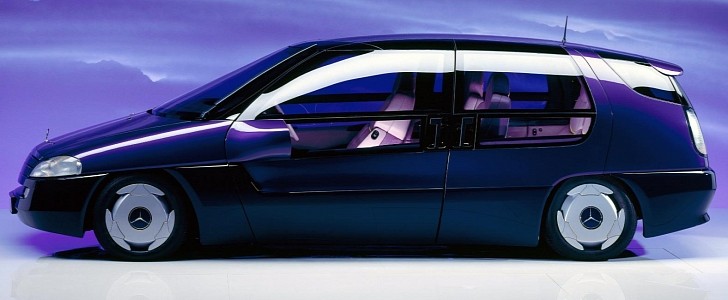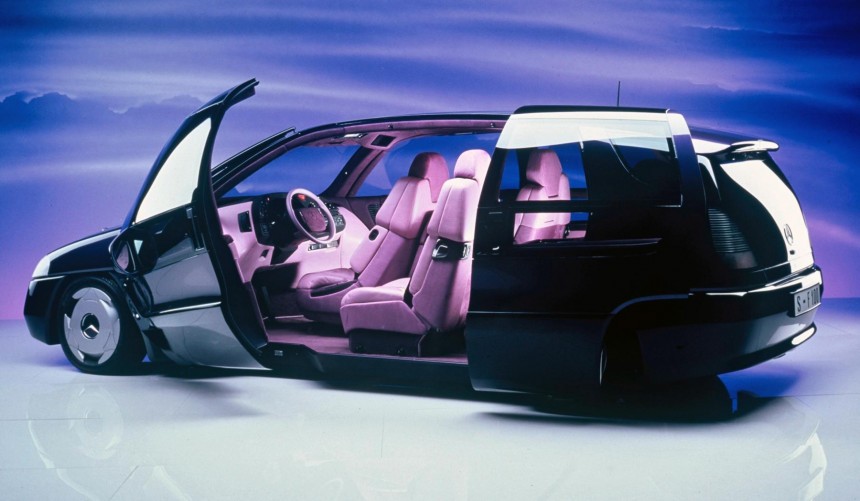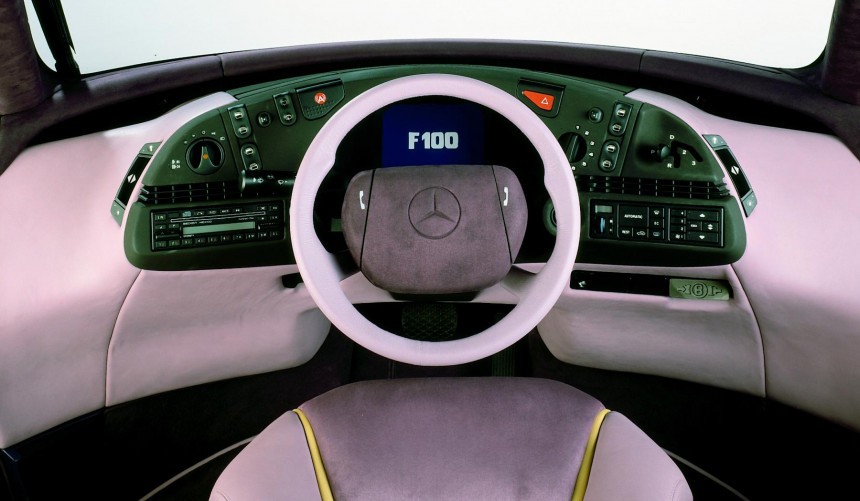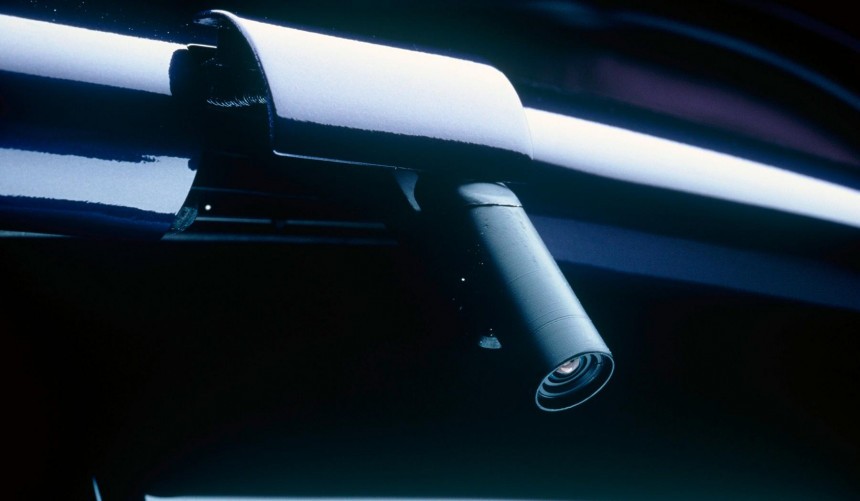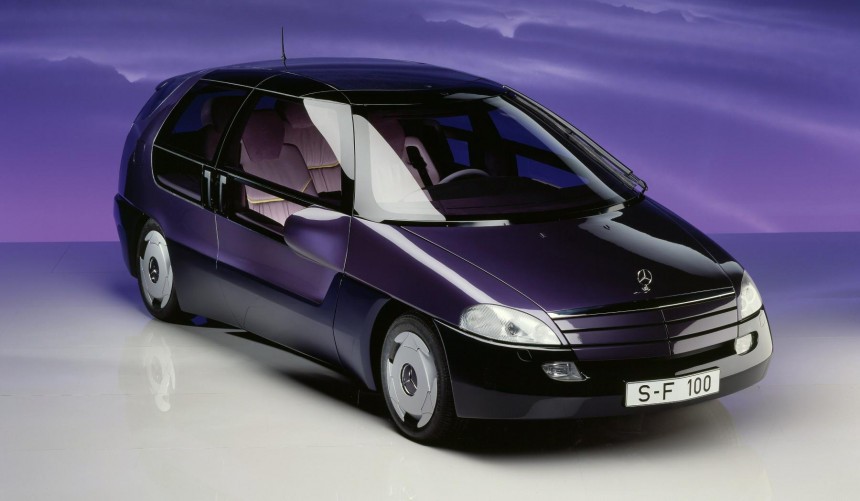At first glance, it looks like a futuristic hearse taken straight out of an Isaac Asimov novel, but the revolutionary Mercedes-Benz F100 concept car pioneered many innovative features that were utopian back then but have become common in contemporary vehicles.
Presented to the public in January 1991 at the North American International Auto Show (NAIAS) in Detroit, this visionary research vehicle blew the minds of people with its futuristic equipment.
Mercedes engineers and designers incorporated more pioneering technology into the F 100 than in any other concept before it, showcasing their vision for the future of passenger cars, while focusing on practical applications.
The car boasts many details that promised to transform both safety and convenience. Using the knowledge available at the time, the team responsible for development showed foresight in terms of how future safety features would influence vehicle technology and automotive design.
To make sure that the person behind the wheel can rely on the safest spot inside the F 100, the driver’s seat is positioned in the center of the cabin. Research showed that this position would be the safest in most crash scenarios.
Parts of the vehicle floor and roof also open together with new rotating doors to make sure that the driver can easily get in and out of the vehicle on the side that faces away from traffic.
Behind the driver, the two passenger seats are offset from the center and are shielded by robust rear wheel arches. Getting in and out of the rear seats is also very easy due to the lack of conventional B-pillars and the giant swiveling doors, which used an early version of the ‘soft-close’ mechanism.
The F 100 is equipped with a central screen placed behind the steering wheel, within the driver’s field of view that delivers critical information like speed or warnings indicating imminent hazards.
Many advanced driver-assistance systems were integrated, like Active Blind Spot Assist or distance control, an early version of today’s adaptive cruise control that made its way to the S-Class as DISTRONIC seven years later.
A reversing camera was integrated by the designers, a feature that would debut on a production Mercedes-Benz in 2005, on the S-Class flagship.
To improve visibility at night, the F 100 uses xenon headlights while the taillights are comprised of prism rods triggered by a central light source and can instantly change color and intensity.
The massive front wiper can move across the entire width of the windscreen as it's automatically triggered by the incorporated rain sensor. In the back, the wiper is discreetly concealed under the roof spoiler, and it not only cleans the rear window but also the taillights.
In the development phase of this concept car, many engine designs were taken into consideration, including a combustion engine powered by hydrogen; the team opted for a conventional gas-powered ICE eventually.
However, front-wheel-drive was totally unconventional at that time for Mercedes, which would break with tradition six years later with the release of the first-ever A-Class.
Other innovative features that it pioneered include an electronic tire pressure monitoring system, phone-based voice recognition, or the use of a card instead of typical keys.
From Carl Benz’s 1886 Patent Motor Car to the 2020 VISION AVTR, concept cars have shaped the future of Mercedes-Benz vehicles and influenced the evolution of the automotive industry.
While not the prettiest experimental vehicle built by the carmaker, the F 100 is undoubtedly one of the most influential. Today, it can be admired at the Mercedes-Benz Museum in Stuttgart.
Mercedes engineers and designers incorporated more pioneering technology into the F 100 than in any other concept before it, showcasing their vision for the future of passenger cars, while focusing on practical applications.
The car boasts many details that promised to transform both safety and convenience. Using the knowledge available at the time, the team responsible for development showed foresight in terms of how future safety features would influence vehicle technology and automotive design.
Parts of the vehicle floor and roof also open together with new rotating doors to make sure that the driver can easily get in and out of the vehicle on the side that faces away from traffic.
Behind the driver, the two passenger seats are offset from the center and are shielded by robust rear wheel arches. Getting in and out of the rear seats is also very easy due to the lack of conventional B-pillars and the giant swiveling doors, which used an early version of the ‘soft-close’ mechanism.
Many advanced driver-assistance systems were integrated, like Active Blind Spot Assist or distance control, an early version of today’s adaptive cruise control that made its way to the S-Class as DISTRONIC seven years later.
A reversing camera was integrated by the designers, a feature that would debut on a production Mercedes-Benz in 2005, on the S-Class flagship.
The massive front wiper can move across the entire width of the windscreen as it's automatically triggered by the incorporated rain sensor. In the back, the wiper is discreetly concealed under the roof spoiler, and it not only cleans the rear window but also the taillights.
In the development phase of this concept car, many engine designs were taken into consideration, including a combustion engine powered by hydrogen; the team opted for a conventional gas-powered ICE eventually.
Other innovative features that it pioneered include an electronic tire pressure monitoring system, phone-based voice recognition, or the use of a card instead of typical keys.
From Carl Benz’s 1886 Patent Motor Car to the 2020 VISION AVTR, concept cars have shaped the future of Mercedes-Benz vehicles and influenced the evolution of the automotive industry.
While not the prettiest experimental vehicle built by the carmaker, the F 100 is undoubtedly one of the most influential. Today, it can be admired at the Mercedes-Benz Museum in Stuttgart.
